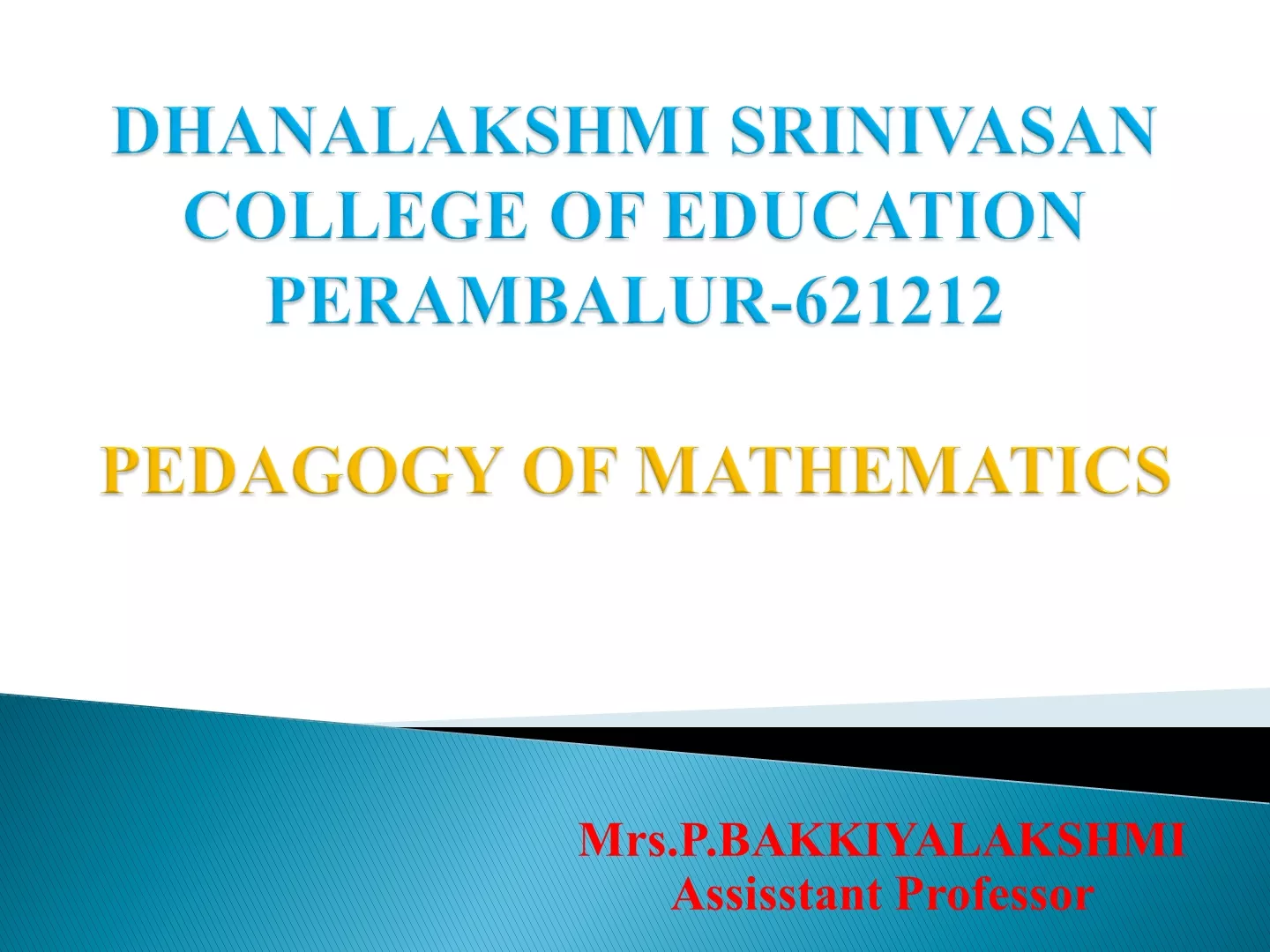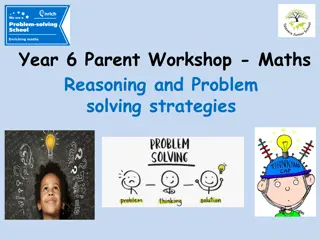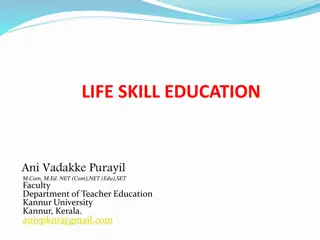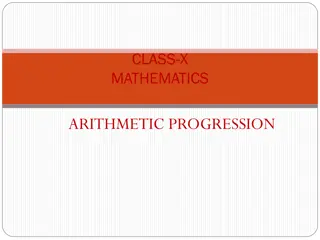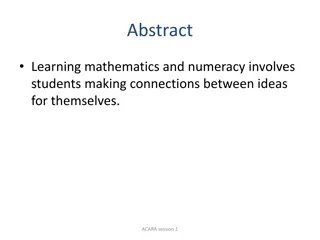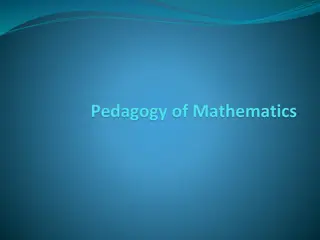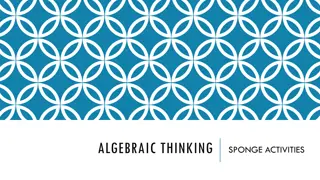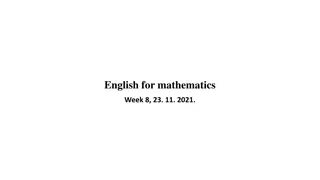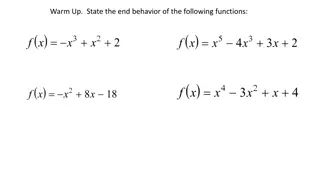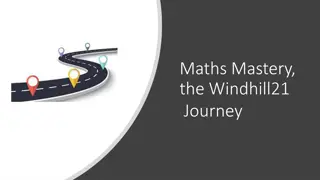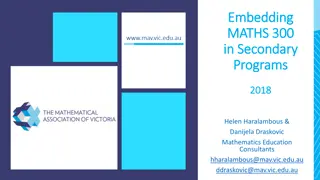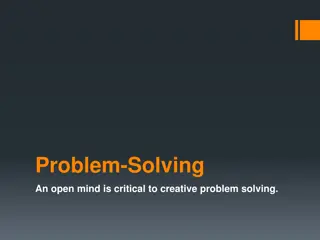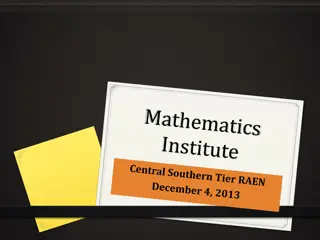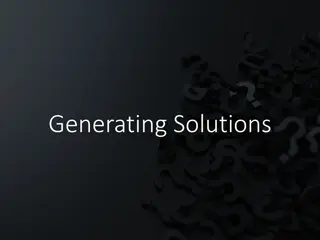Enhancing Problem-Solving Skills in Mathematics Workshops
In this workshop focused on problem-solving in mathematics, participants engage in various tasks and activities to develop a deep understanding of problem-solving strategies. The key messages emphasize the importance of integrating problem-solving into daily mathematics learning, utilizing multiple approaches to enhance student creativity, and fostering a culture of critical thinking. Practical strategies, collaborative work, and a connection to curriculum content are highlighted as essential elements for building strong problem-solving abilities. The workshop aims to empower students to apply diverse skills and approaches in solving complex mathematical problems effectively.
Download Presentation

Please find below an Image/Link to download the presentation.
The content on the website is provided AS IS for your information and personal use only. It may not be sold, licensed, or shared on other websites without obtaining consent from the author.If you encounter any issues during the download, it is possible that the publisher has removed the file from their server.
You are allowed to download the files provided on this website for personal or commercial use, subject to the condition that they are used lawfully. All files are the property of their respective owners.
The content on the website is provided AS IS for your information and personal use only. It may not be sold, licensed, or shared on other websites without obtaining consent from the author.
E N D
Presentation Transcript
Workshop 6 Problem Solving
Timetable 19.00 - 19.05 Overview 19.05 - 19.10 Review of Workshop 5 HW Task 19.10 - 19.20 Task 1 (a) 19.20 - 20.05 Task 1 (b) Multiple Strategies 20.05 - 20.20 Break 20.20 - 21.00 Task 2 - 3D Trigonometry 21.00 - 21.30 Summary 3
Review of Workshop 5 How did you bring your learning from Workshop 5 Algebra & Functions back to your classroom? 4
Key Messages Problem-solving should form an integral part of students daily experience of studying mathematics. Multiple approaches are needed to encourage students to move away from functional fixedness Students need to be able to apply a variety of strategies and skills in order to develop their problem-solving abilities. Building deep knowledge and making connections across the syllabus strands is important.
Task 1 - Learning Outcomes Understand what problem-solving is and that it is not a separate topic but rather an integral part of teaching and learning across the syllabus. Understand the importance of student s having access to practical strategies to approach a problem. Reflect on classroom culture regarding problem-solving. Understand the importance of deep knowledge of curriculum content. 9
Problem-Solving http://tinyurl.com/WS6Problem-Solving
What is a good problem? Interesting Multiple approaches Layers Linked to syllabus Group work Discussion 12
Problem-Solving Problem-solving provides a context in which concepts and skills can be learned and in Problem solving means engaging in a task for which the solution is not immediately SOL 17: The student devises and evaluates strategies for investigating and solving which discussion and co-operative working may be practised. Moreover, problem- obvious . problems using mathematical knowledge, reasoning and skills. solving is a major means of developing higher-order thinking skills. In the mathematics classroom problem solving should not be met in isolation, but -Primary Curriculum should permeate all aspects of the teaching and learning experience . Students develop problem-solving strategies through engaging in tasks for which the solution is not immediately obvious. They reflect on their own solution strategies to -Junior & Leaving Certificate Syllabi such tasks and compare them to those of others as part of a collaborative learning cycle. - Junior Cycle Specification 13
Example 14
Example 15
Fraction Word Problem A spaceship travelled of a light year and stopped at a space station. Then it travelled of a light year farther to a planet. How many light years did the spaceship travel? 16
Multiple Approaches Learners are encouraged to solve problems in a variety of ways and are required to evaluate methods and arguments and to justify their claims and results . 17
Problem How many dots in the 50th stage? Stage 1 Stage 2 Stage 3 http://tinyurl.com/AlgebraResource
By encouraging learners to share and explain their solution strategies, those that work as well as those that don t work, teachers can help learners to develop robust and deep mathematical understanding as well as confidence in their mathematical ability Problem-solving tasks activate creative mathematical thinking processes as opposed to imitative thinking processes activated by routine tasks . Reasoning mathematically about tasks empowers learners to make connections within mathematics and to develop deep conceptual understanding . Page 10. Leaving Certificate Mathematics Syllabus
Reflection What does a problem-solving classroom looks like? How can we develop a problem-solving culture in the classroom? What can we as teachers do to encourage a problem-solving disposition among students? How can we help students reflect upon their thinking?
Culture in the Classroom In a mathematics problem-solving environment it is recognised that there are three things learners need to do: make sense of the problem make sense of the mathematics they can learn and use when doing the problem arrive at a correct solution to the problem . -Junior & Leaving Certificate Syllabus Page 10 25
Task 1 - Learning Outcomes Understand what problem-solving is and that it is not a separate topic but rather an integral part of teaching and learning across the syllabus. Understand the importance of student s having access to practical strategies to approach a problem. Reflect on classroom culture regarding problem-solving. Understand the importance of deep knowledge of curriculum content. 26
Task 2 - Learning Outcomes Recognise the importance of modelling to develop students spatial thinking. Understand the value of using 3D models to help students to understand 3D problems. Identify connections and build on prior knowledge. 27
3D Problems What do students find difficult about 3D trigonometry? How do you help students gain an understanding of 3D trigonometry? (The) study found a relationship between young children s construction skills and strong number sense and success in solving mathematical word problems (Nath & Sz cs, 2014) Children are as nonresponsive to short term explicit instruction on spatial transformation tasks as adults. (Ehrlich, Levine & Goldin-Meadow, 2006)
Can you make sense of this diagram? 1. Show that |AC|= 1.95m, correct to two decimal places. 2. The angle of elevation of B from C is 50 (i.e. | BCA| = 50 ). Show that |AB| = 2.3 m, correct to one decimal place. 3. Find |BC|, correct to the nearest metre. A glass Roof Lantern in the shape of a pyramid has a rectangular base CDEF and its apex is at B as shown. The vertical height of the pyramid is |AB|, where A is the point of intersection of the diagonals of the base as shown in the diagram. Also |CD| = 2.5m and |CF| = 3m
How can we model this problem in 3D? Describe the model and how you interacted with it? What insights will students gain after working with the model? What are the advantages/disadvantages of students working with each model? How will we know when students can visualise a model in their mind's eye?
Task 2 - Learning Outcomes Recognise the importance of modelling to develop students spatial thinking. Understand the value of using 3D models to help students to understand 3D problems. Identify connections and build on prior knowledge. 32
Key Messages Problem-solving should form an integral part of students daily experience of studying Mathematics Multiple approaches are needed to encourage students to move away from functional fixedness Students need to be able to apply a variety of strategies in order to develop their problem-solving abilities. Building deep knowledge and making connections across the strands is important.
Summary Evaluation Form http://tinyurl.com/WS6Evaluation advisorname@pdst.ie 35


